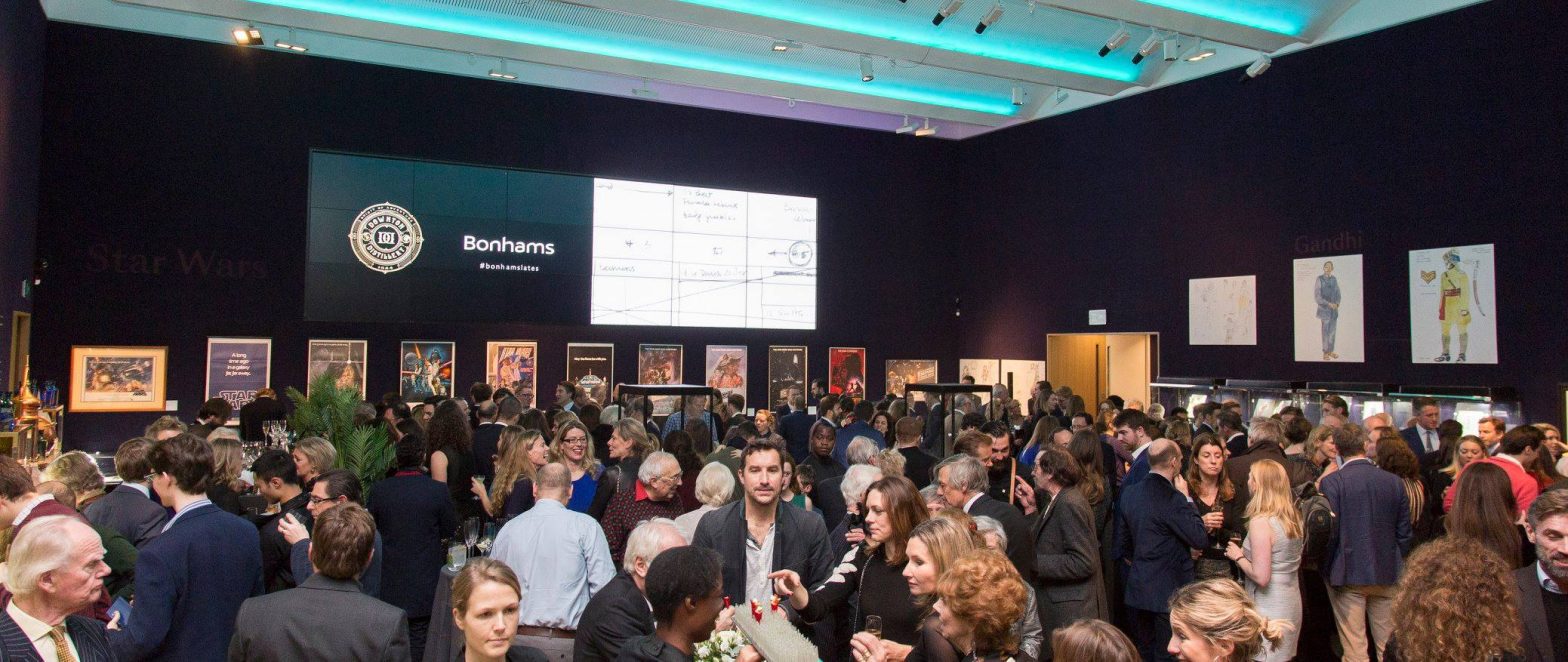Bonhams is a privately owned British auction house and one of the world’s oldest and largest auctioneers of fine art and antiques. They have been a supporter of Modern Art Oxford for over 5 years. In this post Clémence Tasiaux, Head of the Post-War & Contemporary Art department at Bonhams, discusses why female artists are undervalued at auction compared to their male peers and why gender parity in the arts is so important.
Women artists have always existed, so why is it that they are only recently – some 50 odd years after the women’s liberation movement – starting to get the recognition they deserve?
A structural imbalance rooted in the fact that the white male perspective was inherently accepted as the only valid one for centuries made it almost impossible for women artists to become equally as celebrated as their male counterparts. Although a handful of Old Mistresses, female Impressionist and Post-Impressionist artists may have found some success during their lifetime, not only were virtually none of them hailed as geniuses by their contemporaries, but most have long since been forgotten and are excluded from art history books. Furthermore, they were expected to produce works which were confined to the domestic sphere, decorative, and pleasant – in other words, unoriginal. For most of history, greatness and innovation were qualities reserved exclusively for men.
This being said, a few fiercely independent and talented Old Mistresses – one of the greatest examples of which is perhaps Artemisia Gentileschi – left behind an oeuvre that is unquestionably outstanding, original, and still relevant to this day. Mostly depicting female figures in history or mythology as empowered survivors and fighters, Artemisia Gentileschi defied convention with an output which was radically feminist. Susanna and the Elders for instance, which she painted in 1610 at only 17 years old, denounced unwanted sexual advances and predates #MeToo by four centuries.
As society evolved during the 20th Century, women’s creative potential became increasingly accepted within cultural circles, which inherently tended to be more liberal. Modern masters such as Meret Oppenheim, Louise Bourgeois, Helen Frankenthaler, Georgia O’Keeffe, Barbara Hepworth and Joan Mitchell were highly respected in their artistic milieu; their markets, however, never soared to the dizzying heights of their male peers.
Starting in the early 1970s, the feminist art movement opened up space for debate about the place of women in art and paved the way for future generations of artists by directly challenging gender inequality or reclaiming the female body. Not all women artists are feminist artists, but all women artists add to the societal, political and cultural discourse by drawing from their own unique female experience. While women have always counted for half the population, their voices were up until recently considered to be that of outsiders which is factually absurd. It is crucial that they and their perspectives are represented in art, not just as idealised subjects but as contributors.
The imbalance is slowly being rectified: institutionally, the contemporary landscape is becoming more even, and remarkable women artists from previous centuries are being rediscovered and currently undergoing a major reevaluation. Commercially, even though the market is rapidly and significantly improving (every single auction record for the female artists cited in this post has been achieved within the last five years), we aren’t quite there yet. I can think of no valid reason why masterpieces produced by such extraordinary artists as these women should be worth less than those of their male counterparts, and yet 100% of the top hundred record prices at auction are still held by male artists. The highest price for a living female artist is US$ 12.5 million, compared to US$ 90.3 million for a living male artist. The highest price for any female artist at auction was achieved by Georgia O’Keeffe in 2014 which, at US$ 44 million, is still only a fraction of the US$ 450 million grossed by Leonardo da Vinci’s Salvator Mundi. Interestingly, almost all of the highest auctions prices for female artists were achieved after the Georgia O’Keeffe record, as if this precedent asserted the commercial legitimacy of art produced by women and encouraged collectors to bid more confidently on female artists. This demonstrates the necessity of glass-ceiling-breaking catalysts to trigger change.
I believe that the current promising reappraisal of female artists is closely linked to both a (relative) redistribution of wealth and power between men and women, and a change of mentality in society at large. An increasing number of women now hold prominent positions in leading cultural institutions, and the recent proliferation of major museum exhibitions featuring exclusively female artists is no coincidence as practically all of them were curated by women. Similarly, as women rise up the corporate ladder and accumulate capital of their own, there are more female collectors today and they naturally respond to art that addresses the struggles and joys with which they are familiar. This being said, female artists aren’t exclusively collected and appreciated by women: more and more individuals, whether they are male, female or gender non-binary, have embraced the fact that we learn and grow from our exposure to the ‘other’ and know that society benefits from acknowledging the validity of each viewpoint weaving the rich human tapestry.
Clémence Tasiaux joined Bonhams in January 2019 as Head of the Post-War & Contemporary Art department in London. Bilingual in French and English, Clémence previously worked at Sotheby’s for several years, latterly as deputy director and contemporary art specialist at its London location. She subsequently joined the art advisory and brokerage firm Alcacer where she helped expand the business and advised clients on all aspects of their collections. Born in Chicago and raised in Singapore, Hong Kong and Brussels, she holds an M.A. in Law as well as an M.Litt. in Modern and Contemporary Art History. Find out more about Bonhams here.
